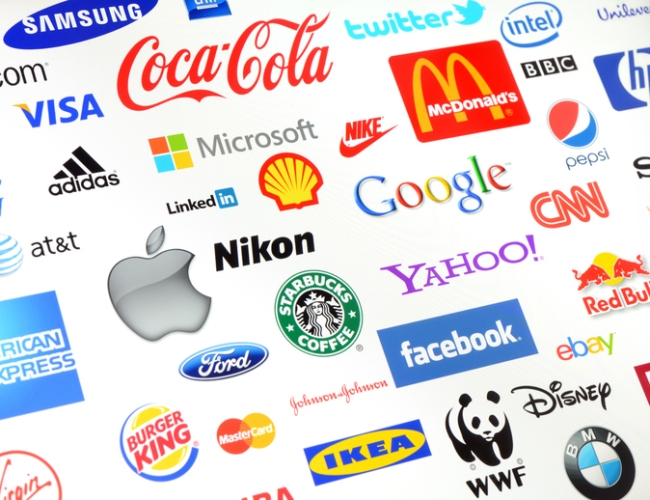You have /5 articles left.
Sign up for a free account or log in.

iStock/Hocus Focus Studio
As academics (and probably as decent human beings) we are taught to be humble. When we write a paper or present our work, we often say “we” even if it is “I” that did the work.
I believe that is one of the underlying reasons why it is so hard for Ph.D. students and postdocs to market themselves when it comes to networking and job searching. Once you gain self-awareness and have a good understanding of your skills, you should start thinking of yourself as a brand -- yes, you read that correctly. It does not matter if you are looking for a faculty position or trying to break into science policy. You need to know your brand and then project it in everything you do.
I know you keep hearing you need an elevator pitch, you need to network, you need to do informational interviews and so on. Truth is, it takes hard work to stand out in today’s competitive market, and if you want to leave a positive, lasting impression -- just like your favorite brands do -- you should know your own personal brand.
Companies work hard and spend a lot of money to make sure we have their brands in mind when we shop. And why is that? Because as a famous advertising executive named John Hegarty said, “A brand is the most valuable piece of real estate in the world: a corner of someone’s mind.” Just as Dove wants you to buy their shampoos rather than L’Oréal’s or Google wants you to use their search engine instead of Bing’s, when you go to an informational interview or present at a conference, you want others to remember you when they might have an opportunity that fits you.
If I were to show you the logos of Apple, Nike, American Express, BMW or Facebook, thoughts and feelings associated with those brands would surface in your brain. A brand is a combination of facts and emotions. For example, Apple -- which according to Interbrand is currently the most valuable brand in the world -- has become so not just by selling computers or phones but also by selling you the perception of beautiful designs, imagination and innovation. Apple has a cool factor about it. In the business world, it means you will be willing to stand in line for hours and pay a premium price for their products.
I recently took a marketing strategy class taught by Edgar Leonard, associate professor of marketing in the Goizueta Business School at Emory University, about how you build a brand story. I learned certain steps that are applicable whether you are trying to market your start-up or yourself.
The problem. To tackle your brand story, you need to ask yourself, “What is the main problem that I am seeking to solve?” In other words, how are you going to make the world a better place?
If we think of Toms shoes, the founder created the company because he saw the hardship of children in Argentina growing up without shoes and wanted to solve it. So for every pair you buy, Toms will donate a pair to someone in need.
Similarly, if you are pursuing a faculty position, the problem you are trying to solve may be the overarching goal of your research -- for example, understanding the role of T cell activation in multiple sclerosis. Or if you are trying to move into project management in industry, the problem you are after might be inefficient use of resources in research projects.
The truth. As you build your personal brand story, you will need to have something big and human that is undeniable and undisputable. You need to find your truth. For example, if you are a neuroscientist studying depression, your truth may be that 350 million people in the world suffer from depression. If you are passionate about science policy, your truth may be that translating scientific discoveries into commercially viable technologies can lead to an economic growth rate of 20 percent.
The tension. Next, just as in any good story or a movie, you must have tension. Tension is about making people care, provoking an emotion, showing a conflict. Tension is a known must in storytelling, and it has been shown to make stories stickier -- in other words, people will remember you better. In simple words, you need to find the Darth Vader in your Star Wars.
If we use the depression fact as our truth, then the tension may be that one million people who suffer from depression commit suicide every year, and that number is expected to double by 2020. Or if you want to pursue a nonscience career, this is an opportunity to actually show that, even if you don’t necessarily have direct experience, you know what you are talking about. Let’s say you are interested in managing clinical trials. In that case, your truth may be that companies lose up to $1 million in revenues for each additional day of clinical trials because of inefficient trials management.
Your role. Thus far, we have laid the basis for your brand story; now it is your turn to shine! What role are you going to play in your brand story? Why are you the hero of it?
For Toms shoes, the role they play is enacted in their one-for-one program for shoes, and that is how the company and its consumers make the world a better place. If you are conducting research, your role may be developing a gene-editing solution to cure cystic fibrosis. Or if you are in science communication, your role can be communicating the importance of science to the layperson through a weekly blog post about scientific advances.
The mission. Once you understand your role, you need to have a mission. The mission is what drives you to do what you do. It is your promise to the world and the thing that will drive you forward. Your personal brand mission should be as distinctive as you, and it needs to be concise, action oriented and, if possible, quantifiable. Amazon’s mission, for example, is "to be Earth's most customer-centric company where people can find and discover anything they want to buy online." As a person, your mission may be understanding T cell activation to find a cure for lupus or empowering postdocs to find the career path they will be happy and successful in.
Expression. I find this to be the most fun part, but it is also the hardest. You need to boil yourself down to a couple of words that are essentially your tagline. A great tagline will have four things: it should be memorable, highlight your value, differentiate you from others and provoke a positive emotion. Everybody knows Nike’s “Just do it,” BMW’s “The ultimate driving machine” or L’Oréal’s “Because I’m worth it.”
A way to approach creating your tagline is to ask, “What should people pay me for? What do I do best that makes me irreplaceable or better than someone else?” A couple examples: “I solve problems to keep research projects moving forward” (for a potential project manager), or “I make complex science digestible to the public” (for a science communicator).
Your values. To identify your values or point of view, you need to ask yourself, “What do I stand for?” Be authentic and, of course, tell the truth. Don’t make up values because you think they sound good.
For example, Steve Jobs’s point of view was that customers want a product that is beautifully designed, intelligent and unique. Nike’s point of view is that “If you have a body, you are an athlete,” and their “Just do it” tagline and everything else they do speaks to that viewpoint. Your values should convey your passion and complement your role and mission.
Remember, people like interesting brands because interesting brands do interesting things. So make sure your brand story conveys why you are interesting. Do not forget that everything communicates. A company’s brand is everything it does, from the logo to the product to the overall customer experience. A personal brand is how you dress, behave, speak -- in short, all you say and do.
This is a challenging exercise, and I’ve tried to exemplify each of the steps from the perspective of both well-known brands and a personal one. But since each one of you is your own special brand, there are no easy answers, and building your brand story will require serious thinking. Explore your possible brand carefully and test it on your mom, spouse or nonacademic friends. Then reiterate and refine it as necessary until you have a great story that sticks.








